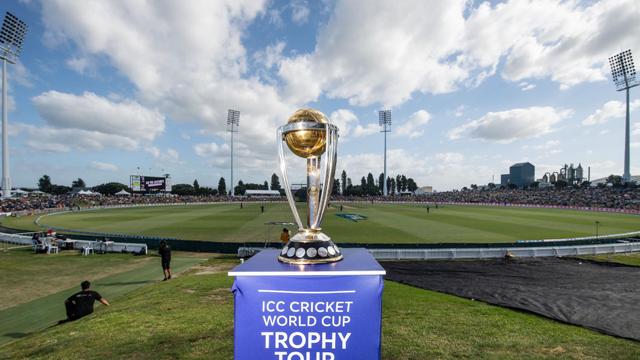 Shaffter: "It was said, perhaps jocularly, that the British first sent the army, they next sent the missionaries, and then cricket." [photo: ICC]
Shaffter: "It was said, perhaps jocularly, that the British first sent the army, they next sent the missionaries, and then cricket." [photo: ICC]
[This is an extract from an article in the current edition of The Round Table: Commonwealth Journal of International Affairs]
Cricket is not the game it once was, and players from past generations may shake their heads at the idea of playing a Test match under lights with a pink ball. While the aim of the game – to score runs and take wickets – is still the same, the way it is played, the format, the equipment, the way it is officiated and even the ball that is used have all changed.
Let us take a look at some of the innovations over past decades that have changed the game.
Most changes have benefited batsmen, to the frustration of the bowlers. One of the biggest was the introduction of covered pitches during the 1960s. Before then, with pitches left open to the elements, overnight rain would leave the classic ‘sticky’ wicket. As the pitch dried, there were opportunities for slow bowlers to put batsmen through a torturous struggle.
In this context, may I mention one of our own cricketers, M. Sathasivam, who was playing for Sri Lanka against a Commonwealth team headed by Frank Worrell in 1952 or 1953. He was batting on a typical drying wicket at the P. Sara Oval and it can be a terrible torture to play on a wicket like that. He was facing two of the terrible bowlers, Fred Freir and George Pope, and he was batting right through the innings. He was the last man to get out. He had played a brilliant innings of 96 and he lost his wicket trying to cross over and take the bowling. He had batted so well that it prompted Frank Worrell to say that Sathasivam was the best batsman in the world at that time.
After the change, pitches became more standardised across the world, although differences still remained between countries and even individual venues within countries, such as the traditional fast, bouncy pitch at the WACA, which has a fast wicket, and the one at Galle.
From the fourth edition of the tournament in 1987, the World Cup was played over 50 overs, which became the standard for most limited-over matches until the advent of Twenty20 cricket.
Various sports have made use of technological advances to aid referees and umpires to get their decisions right during games. The last decade has seen this changing technology used in cricket. It started off with ball-tracking technology that had first been used in tennis in 2006.
The Hawk Eye system used multiple cameras.
The introduction of the Umpire Decision Review System has been controversial, and some countries such as India refused to accept it for a while.
Twenty20 cricket started out as something of a desperate move by the England and Wales Cricket Board (ECB), but 12 years on it has taken over the game of cricket in many respects. The ECB was looking for a shortened form of the game to attract a younger audience and stem a serious decline in crowd numbers for country cricket. They came up with a 20-overs-a-side game with significant alterations, including fielding restrictions, batting and bowling power plays, and the ‘free-hit’ after a no-ball for overstepping.
Many believe the victory of India in the inaugural World Twenty20 final in South Africa in 2007 was a turning point – it led to the commercial juggernaut of the IPL and similar leagues in more than a dozen countries around the world.
It has also led to a much more attacking attitude to cricket, and new strokes such as the ramp shot, the switch hit and others.
Traditionally, the cricket ball was red, allowing batsmen and fielders to see the ball. When World Series Cricket started, the introduction of day–night cricket led to the use of a white ball and a black sight screen and the white ball. As pressure on Test cricket increased due to the popularity of Twenty20, authorities had been moving towards the idea of a trial day–night Test match. To this end, versions of pink balls had been trialled as far back as 2008. In 2010 the trials stepped up a notch, with pink balls used for the first time in day–nighters in Caribbean first-class cricket, the IPL (in nets) and at Abu Dhabi.
Seven years after its debut, the pink ball was used for the first time in a day–night Test match between Australia and New Zealand at Adelaide Oval this year.
Cricket continues to be played in Commonwealth countries and is growing rather than waning. In fact the first international match between Canada and the United States was as far back as 1844. China, I know, is also interested, as five or six years ago when I was in a meeting some people from China came and asked me about introducing cricket to that country. So I am sure they must have gone quite a way towards embracing cricket.
Another interesting thing is that in Afghanistan the Taliban banned all games, but from the year 2000 they permitted cricket. Until then Afghan players were playing in Pakistan; some came back and played in Afghanistan. So cricket had a special place even with the Taliban.
Chandra Schaffter is a businessman and former cricket administrator, Colombo, Sri Lanka



